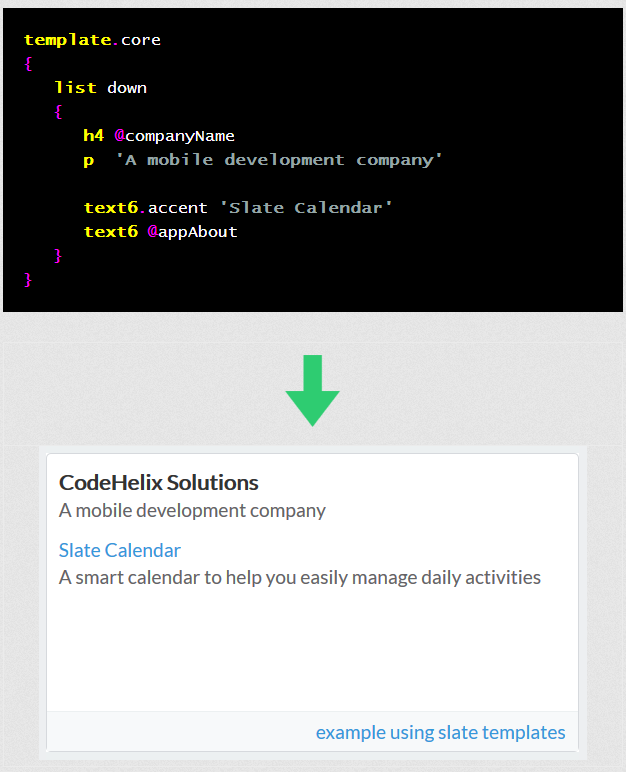SLATE - a native modern templating engine for mobile devices
slate is a light-weight NATIVE cross-platform( android - windows phone ) templating engine for mobile devices. Slate templates are available currrently for android and windows phone. They allow cross-platform UI development allowing you to create native UIs for both android and windows phone.
| platform | notes |
|---|---|
 | currently available for android, see sample app |
 | currently developed for windows, sample app not yet available |
example
Here is a sample template in slate that generates a fully NATIVE UI for android and windows phone. Slate support tags that are similar to html. The templates are very easy to learn and use, almost 40% to 60% smaller than native android xml layouts, offer data binding and many other features. See the wiki page and www.slatetemplates.com for more information.
live use
Slate templates are used in a live android calendar app on google play. The templates are used to generate cards or what we call "boards" on the home page. Check out Slate Calendar for live examples.
sample code for above week forecast
template.core {
// Loop through calendar and show all data for that day. // This includes day/date/weather/first event time
@each ( day in @calendar.days limit=4 )
{
list.col2 {
h6.dayName @day.dayName
text6.cell @day.dayDate
img.iconSmall @day.weatherImage
text6.cell @day.tempHigh
text6.cell @day.tempLow
text6.cell @day.firstEventTimeAsText
text6.cell @day.totalEventsText
text6.cell @day.totalBDaysAsText
}
}
}
goals
Here are some of the top uses for slate templates for both personal projects as well as commercial. Please note this is the first initial release of slate templates ( in beta ) and we will soon provide a beta 2 version.
| # | goal | approach |
|---|---|---|
| 1. | NATIVE | fully native templating engine converts text to native mobile controls |
| 2. | multi-platform | templating engine converts text to native adnroid / windows phone controls |
| 3. | minimal typing | size is 40 % to ** 60% ** less than xml !!! |
| 4. | simplicity | ease to use elements and attributes |
| 5. | familiarity | similar syntax to html and css |
| 6. | flexible styling | tag elements with styles like in CSS |
| 7. | data-binding | supply data to your templates ( mostly logic-less ) |

